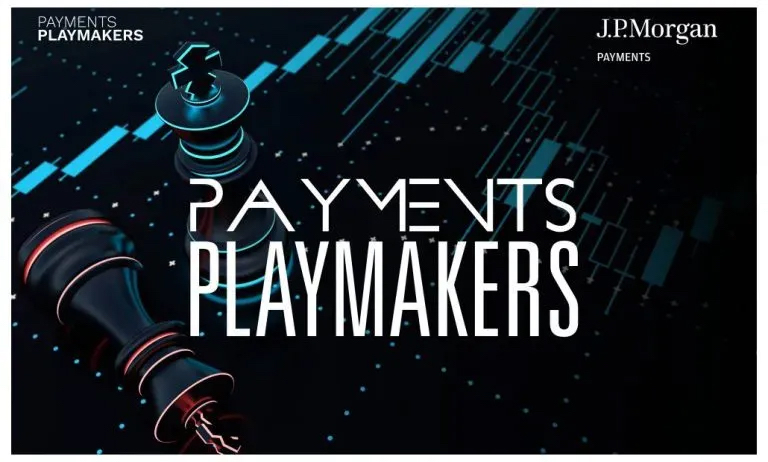J.P. Morgan Payments and Expedia: Platform Ecosystems Demand Treasurers Become Risk Management Professionals
Jim Scurlock, senior director and assistant treasurer at Expedia, and Larson McNeil, co-head of marketplaces and digital ecosystems at J.P. Morgan Payments, told Karen Webster that the role of the corporate treasurer — especially for platform companies operating across borders — has evolved to include active risk management.
“Treasurers need to be able to act quickly and need to be able to provide business insight around balances and exposures,” Scurlock noted.
“With complex ecosystems, you have a higher number of partners than you may have historically had” in the past, McNeil said. This creates new considerations for the corporate treasury function, including management of those partners and counterparty risk.
Global marketplaces must navigate everything from pay-ins to payouts and manage the flow of funds across the platform itself, while accepting an ever-growing roster of preferred payment methods and currencies.
The new reality is underscored by the increasing digitization of the travel industry, where booking trips involves any number of destinations, routes, currencies and partners, including online travel agents, banks, FinTechs and payment processors.
“It’s important to support the needs of travelers while managing that complexity and the underlying, embedded risk,” McNeil said in a conversation that was part of the continuing J.P. Morgan Payments Playmakers series.
In doing so, it’s also become critical for treasurers to be part of an ongoing conversation with internal and external stakeholders to gauge third-party money flows, visibility and security, as new products and services are introduced as business models evolve.
Moving Beyond Bank Accounts
“Historically, when people looked at the treasury ‘world,’ it was very operational,” said Scurlock, who added that treasurers’ roles were focused on bank account and cash management. But at companies including Expedia, the treasurer has moved beyond the boundaries of the finance department to become a trusted adviser across the organization. From his own vantage point, a cross-functional, team-based approach with other departments has been a successful way to look at individual projects to determine broader implications on corporate finance or tax policies.

“We’re getting engaged earlier,” Scurlock said, noting that there’s been a strong bond forged between the treasury and payments teams within Expedia and experts at J.P. Morgan Payments. With an eye on the transactions themselves, said Scurlock, “as with any digital marketplace, many of our discussions today are about ‘how do we make that experience better for our end customers?’”
The end experience, the executives said, is akin to the North Star that guides all other efforts.
It’s a partnership approach that can ultimately lead to better business outcomes as challenges to product development, marketing, tax, accounting, legal and compliance functions are sorted out and addressed early, McNeil said.
“The best-in-class organizations have built these formal and informal, trusted relationships,” he said, as advisors such as J.P. Morgan Payments may understand parts of the business with which the product team or payments team may not have as much experience, including compliance, from a top-down and bottom-up approach.
The time is now to cement those relationships, said Scurlock, who added that “as we continue to move towards real-time payments and mechanisms, that’s going to change many of our internal processes — and not just in one individual market.”
Getting it right, said McNeil and Scurlock, means that platforms can develop within platforms (depending on the use case) and that companies must examine and fine-tune multicurrency functions and foreign exchange management.
Using Technology
Looking ahead, now more than ever, treasury departments must be agile and operating on the forefront of technology, Scurlock said.
“We’re on our own digital transformation journey,” he said, connecting formerly disparate data points and using cloud-based software solutions.
Artificial intelligence is increasingly in the mix.
“We’re taking all of this information and dropping it into cloud-based, centralized treasury data lakes,” he said.
Cleaner data makes machine learning and decisioning models more effective, Scurlock said. For J.P. Morgan Payments, while a business may have been previously only focused on helping move money from point A to point B and charging a fee, it is now, and increasingly so, said McNeil, “more about ‘how do we provide a set of value-added services?’”
As McNeil told Webster, “you’ve got to understand your industry and the various players in the ecosystem — and as complexity increases, you’ve got to understand the risk and the opportunities that this creates for the business.”
See more in the Payments Playmakers series:
How Mondelez Uses Data to Turn Consumers Into Lifelong Customers
Adobe and J.P. Morgan Payments: Why Payments in 2023 Is More Like 3D Chess Than Checkers
J.P. Morgan Payments and Sephora Talk Tap-to-Pay and the Endless Aisles of Omnichannel Commerce
